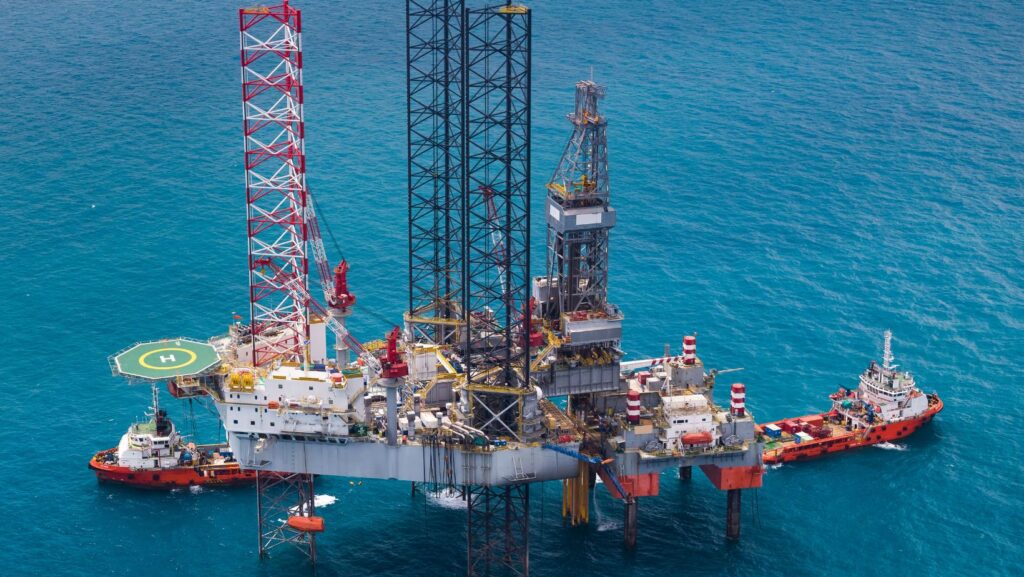Offshore oil rigs are among the most hazardous industrial environments, presenting a range of risks that can lead to catastrophic accidents. One of the most dangerous threats is the potential for explosions, which can cause devastating injuries, fatalities, and environmental disasters. These explosions are often fueled by volatile materials such as oil, gas, and chemicals, combined with the challenging working conditions of offshore platforms. Understanding the unique fire hazards in these environments is crucial for improving safety protocols and protecting workers.
Despite strict safety regulations, explosions on offshore oil rigs still occur, often with tragic results. For those injured in such incidents, seeking legal advice from experienced attorneys like De La Garza Law injury lawyers can help them pursue compensation for their injuries.
Volatile Materials and Flammable Gasses
Offshore oil rigs are filled with highly volatile materials, including crude oil, natural gas, and various chemicals used in the drilling process. These substances are extremely flammable and can ignite if not properly managed. A small leak or gas release in a confined area can quickly result in an explosion if exposed to an ignition source, such as a spark from electrical equipment or even static electricity.
Rig workers must be vigilant, as even minor mistakes can lead to disastrous outcomes. Strict safety measures, such as regular monitoring for leaks and proper handling of flammable materials, are essential to prevent these dangerous scenarios from unfolding.
Confined and Isolated Work Areas
One of the unique challenges of offshore oil rigs is the confined and isolated nature of the work environment. Workers are often stationed on platforms far from shore, making emergency response times slower than in land-based operations. In the event of an explosion, the confined spaces on an oil rig can amplify the destructive force of the blast, causing greater damage to structures and equipment and increasing the risk of injury to workers.
Additionally, isolation means that evacuating workers or receiving emergency assistance can be delayed, leading to more severe consequences. Therefore, maintaining rigorous safety protocols and providing workers with comprehensive training on emergency procedures are critical in reducing risks.
Ignition Sources on Oil Rigs
With their hazardous materials, oil rigs are vulnerable to various ignition sources that can trigger explosions.

Here are the common ignition sources on oil rigs:
- Electrical Equipment: Poorly maintained or malfunctioning electrical systems can ignite flammable gases.
- Welding Tools: Sparks from welding operations pose a significant fire hazard if used near volatile substances.
- Machinery: Heavy machinery, especially when not properly maintained, can generate heat or sparks that may ignite surrounding gases.
- Lighting Fixtures: Faulty or non-explosion-proof lighting can also act as an ignition source in hazardous areas.
- Corrosion and Equipment Failures: Corroded components or equipment failures can lead to accidental ignitions.
- Human Error: Mishandling equipment or neglecting safety protocols can inadvertently cause fires.
The Role of Blowouts in Explosions
A common cause of explosions on offshore oil rigs is a blowout. A blowout occurs when the pressure from underground oil or gas exceeds the well’s containment systems, causing an uncontrolled release of hydrocarbons. When this release occurs, it can ignite upon contact with an ignition source, leading to a massive explosion.
Blowouts are particularly dangerous because they can happen suddenly and with little warning. Preventative measures, such as blowout preventers (BOPs) and pressure control systems, are critical in reducing the risk of these incidents. However, failures in these systems have led to some of the deadliest offshore explosions in history, highlighting the importance of rigorous maintenance and monitoring.
Fire Suppression Challenges in Offshore Environments
Once a fire breaks out on an offshore oil rig, suppressing it can be extremely difficult due to the remote location and limited firefighting resources available. While oil rigs are equipped with fire suppression systems such as sprinklers and foam suppression systems, these may not always be sufficient to control large fires. The proximity to water can also create unique challenges, as seawater may not be suitable for putting out certain types of fires, especially those involving chemical or gas-related explosions.
Moreover, high winds and harsh weather conditions common in offshore environments can cause fires to spread more rapidly, making containment even more difficult. Ensuring that fire suppression systems are fully operational and regularly tested is essential to minimizing the damage in the event of a fire.
Human Error and Safety Protocol Failures
Despite the sophisticated technology used on offshore oil rigs, human error remains a leading cause of accidents. Failing to follow safety protocols, improper equipment handling, or neglecting maintenance schedules can all contribute to explosions and fires. Additionally, communication breakdowns between workers can lead to dangerous situations being overlooked or mismanaged.
Training workers thoroughly and ensuring that safety protocols are enforced at all times can help prevent accidents caused by human error. Offshore oil rigs must adopt a culture of safety where workers feel empowered to report potential hazards and follow procedures strictly.
Weather-Related Hazards on Offshore Rigs
Weather conditions present another significant hazard for offshore oil rigs, especially in areas prone to extreme weather like hurricanes or storms. High winds and lightning can create additional ignition sources or exacerbate existing fires. Storms can sometimes disrupt operations, damage equipment, or cause structural weaknesses that lead to accidents.

Offshore rigs must be prepared for weather-related challenges by implementing storm protocols and ensuring workers have clear evacuation procedures. Constant monitoring of weather conditions and real-time responses to sudden changes can help mitigate the risk of weather-induced explosions or fires.
Importance of Safety Drills and Emergency Preparedness
Given the unique hazards of offshore oil rigs, regular safety drills and emergency preparedness are essential for minimizing the damage caused by explosions and fires. Workers need to be familiar with escape routes, emergency shutdown procedures, and the proper use of fire suppression systems. Routine drills can help workers respond more efficiently and confidently in actual emergencies.
Investing in comprehensive training programs and conducting frequent safety drills can dramatically improve emergency response times, reduce injuries, and save lives during accidents on offshore rigs. This proactive approach is a key component of maintaining a safer offshore environment.



